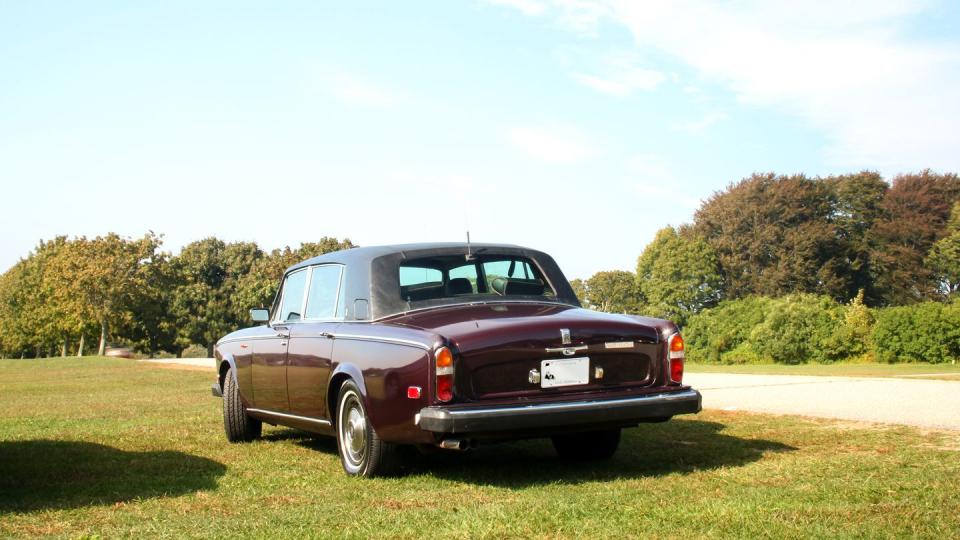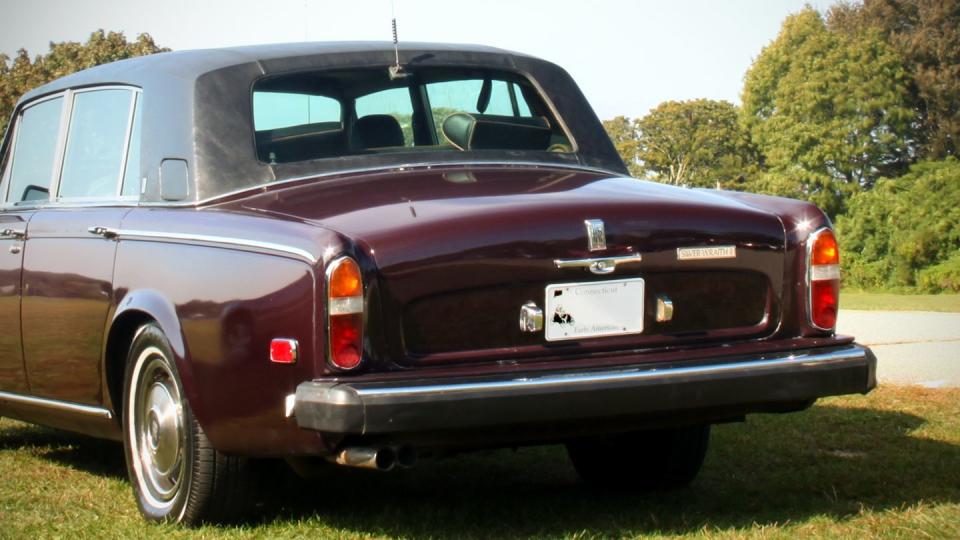Street-Spotted: Rolls-Royce Silver Wraith II

The Rolls-Royce Silver Shadow is familiar enough to car enthusiasts, having been the British marque's main offering for a whole era stretching from 1965 to 1995 when the last Corniche was finally retired. And not just for Rolls-Royce but for Bentley as well, as it donned a very light disguise (okay, no disguise at all), and became the Bentley T-series.
We spotted this Rolls hanging out in a park, but... what is a Silver Wraith II, exactly?
Within the Silver Shadow Cinematic Universe (SSCU), there were actually a few sequels with minute differences.
The standard Silver Shadow itself arrived in 1965 along with its Bentley twin, replacing the Silver Cloud, which—despite today sounding like a computing platform—was actually a larger and more traditional car in many respects, and generally looked like a fancy vintage car from an old cartoon.
The Silver Shadow was a leap into the modern age for the two marques, offering a slab-sided three-box design, unibody construction, and reliable V8 power.
Early on that V8 engine was a 6.2-liter unit, good for 172 hp, but a few years into production Rolls switched to the more familiar 6.75-liter unit, producing 189 hp. The transmission was sourced from GM, in the form of the four-speed Turbo-Hydramatic 400.

Rolls-Royce product cycles were long back then, with the automaker unveiling the Silver Shadow II in 1977 with a few changes inside and out, including updated bumpers, their rubber elements being one of the telltales of the new generation.
But yet another sequel arrived in 1977, in the form of the Silver Wraith II.
This was a long-wheelbase version of the Silver Shadow, stretched by four inches at the B-pillar for the benefit of rear-seat passengers, but also wore an Everflex vinyl roof. The Silver Wraith II also featured a smaller rear window, giving the Everflex roof a bit of a more traditional, wraparound appearance out back.
A rare option was a partition inside for the driver, but this tended to eat up quite a bit of the interior space. The Silver Wraith II also wore the same, if slightly fancier, wheel covers as the Corniche convertible.
The Silver Wraith II enjoyed a much shorter time in production, only from 1977 through 1980, but still quite a few examples were produced in that time span, with 2136 cars leaving Crewe.
Viewed through today's eyes this is a surprisingly compact car, even though this was the pinnacle of British luxury at the time. The Silver Spirit that arrived in 1982, along with its Bentley Mulsanne twin, felt like a much larger car inside and out, even though the long-wheelbase Silver Wraith II seen here is actually longer than the short-wheelbase Silver Spirit by a fraction of an inch.
And in today's traffic the Silver Shadow and the Silver Wraith II cars enjoy a little anonymity, due to the muted styling and their size. That's not something one could say about modern Rolls-Royces.
The Silver Shadow itself was a solid success for the automaker, and became the volume model for Rolls-Royce in a way that previous models never approached. Just over 30,000 sedans of all varieties were produced through 1980, including the Silver Wraith II, but not counting the Corniche.
And the basic platform lived on even longer, with the Corniche III only leaving production in 1995.
Is the Silver Shadow/Silver Wraith very noticeable in traffic today, or do they hide well due to their boxy designs? Let us know what you think.


